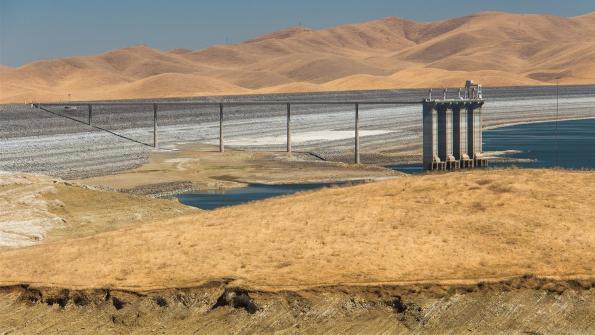
Though cautioned that this is only an “initial” allocation and water conditions can change, California State Water Project (SWP) contractors can expect at least 20 percent of their allocations in 2017.
The initial allocation is the first announcement each year to the 29 water agencies served by the SWP of what they can expect as the water year moves along.
The 29 public water agencies that receive SWP water collectively requested 4,172,786 acre-feet of water for 2017. Under today’s initial allocation they would receive less than 850,000 acre feet based on current water conditions.
The 2016 final allocation for those agencies was 60 percent. The California Department of Water Resources says these agencies also have local streams, reservoirs and groundwater available for use, meaning not all of their water comes from surface supplies.
Due to man-made restrictions reported to protect threatened and endangered fish species, it is effectively impossible for the state to provide SWP water contractors with full, requested allocations anymore. The last 100 percent SWP allocation was in 2006.
Lake Oroville in Butte County, the SWP’s principal reservoir, sits at about 42 percent of capacity with a little less than 1.5 million acre feet of water in storage. That is said to be about 70 percent of its historical average.
San Luis Reservoir, a critical south-of-Delta pool for both the SWP and federal Central Valley Project water users, has a little more than 800,000 acre feet of water in storage, 40 percent of its 2 million acre-foot capacity and 67 percent of its historical average for the date.
San Luis Reservoir nearly went dry earlier this year as state and federal water managers declined to move last winter’s runoff into the reservoir, opting instead to allow over one million acre feet of runoff flow out to sea rather than be stored for later use.
Much of Northern California saw October rainfall well over 100 percent of normal with some locations recording between 250-500 percent of the monthly normal rain totals. The U.S. Drought Monitor as of mid-November had five counties – Del Norte, Siskiyou, Humboldt, Trinity and Shasta – lifted from drought conditions.
Conversely, the most severe of drought conditions that once plagued much of the state, are now relegated to parts of the southern San Joaquin Valley, southern Sierra and South Coast.
Late November saw an increase to the state’s snowpack and additional rain in Northern California.
SWP allocations in recent years:
2016 – 60 percent
2015 – 20 percent
2014 – 5 percent
2013 – 35 percent
2012 – 65 percent
2011 – 80 percent
2010 – 50 percent
2009 – 40 percent
2008 – 35 percent
2007 – 60 percent
DWR maintains three websites to report current water conditions: Reservoir levels, precipitation, and snowpack conditions are all available online.
About the Author(s)
You May Also Like






